In an introduction to the exhibition (Un)layering the future past of South Asia: Young Artists Voices states, ‘Artists in the region ruminate on many common concerns; the creative imagination in seemingly disparate locations is curiously connected by resilience and inventiveness.1’ This sums up the intent and content of the exhibition up at SOAS Gallery in London quite succinctly. Bringing together 26 artists from Afghanistan, Bangladesh, India, Nepal, Pakistan and Sri Lanka, the showcase pulls together thematically connected works that cast a spotlight on cross-regional narratives which reflect shared realities. The Pakistani and Indian co-curators Salima Hashmi and Manmeet K. Walia respectively, have attempted to address and bridge divides that have long festered in the subcontinent. This curatorial collaboration also highlights an unfortunate and contentious wound that has suddenly been brought to the fore by the current political upheaval and unleashed chaos around the globe.
Curatorially, the artworks are divided in four categories: Textile and Contemporary Practice, The Disappearing Landscape Shared Histories, Collective Memories and Surviving Conflict/Dreams of Peace. Within these categories are works that reference political oppression, gender violence, colonial brutality and post-colonial traumas, ethnic conflict, memory and loss, environmental degradation, language and cultural lamentation, urban development and forced displacement.
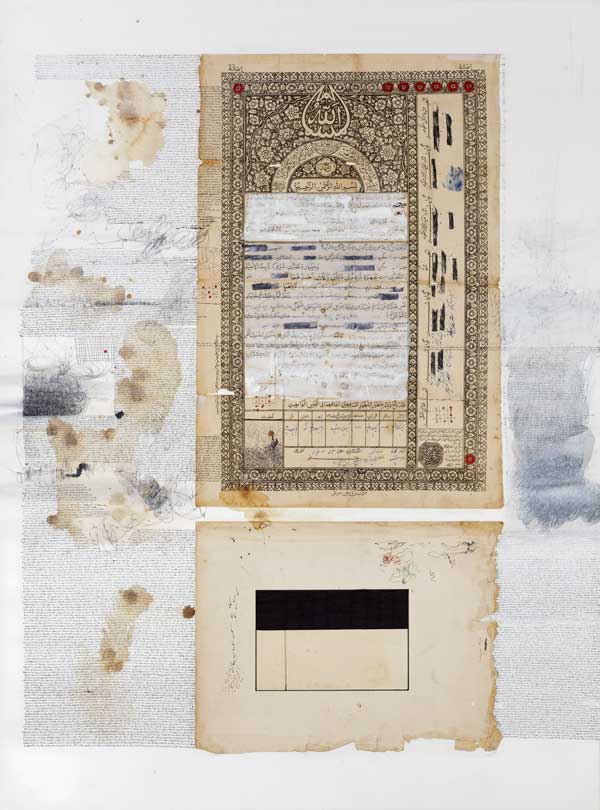

Sangeeta Maity’s work, Changing the Course of the River though particularly about Chota Nagpur region— a plateau area in Eastern India— will resonate with various communities of the subcontinent. Her thirty square-shaped copper plates are marked, scratched, and etched to command turquoise, green and bronze patina patterns to flow across the plates.The choice of copper, resonates with her subject; Chota Nagpur is an area rich in minerals, a wealth that has placed its populace at risk of displacement— erasing histories and memories as the area falls prey to state-imposed false narratives crafted to justify so-called ‘development.’ Her work is a means of resistance, as she highlights and laments the erasure of a people and its histories.
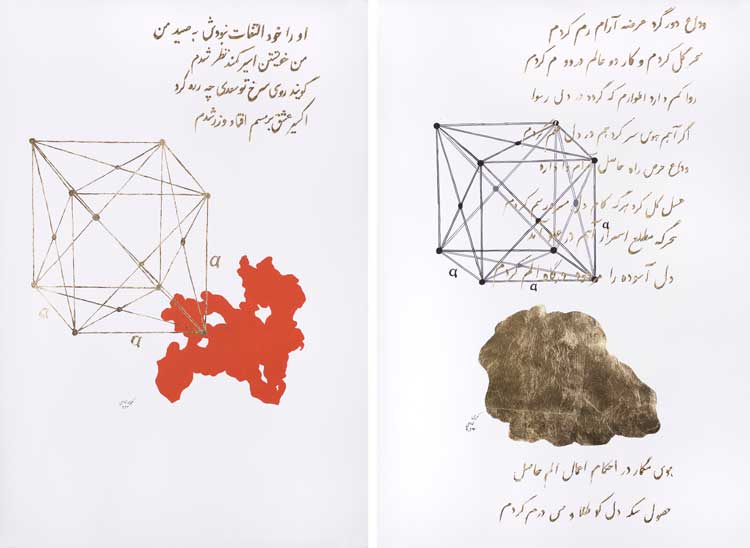
Also evoking lands rich in minerals is the Afghan artist Kubra Khademi’s series of minimalist paintings on Vasli. Each piece is named after a precious mineral found in Afghanistan. Khademi tends to make work that puts women and their sexuality front and centre as a means to confront the Afghan government’s regressive laws that work against women. However, these pieces are different in that they comment on the geopolitical power games that have deprived Afghanistan from rising to a commendable state status and reclaiming its past glory. Being rich in precious resources such as cobalt, turquoise, copper, lapis lazuli, and gold— all of which have been turned to pigment and used in this series— the country and its people have been plagued with wars of occupation, first by the Soviet Union and later by USA over the past many decades. Through these works, Kubra Khademi ‘lays the foundation for an urgent shift toward a decolonized and feminist paradigm.’2
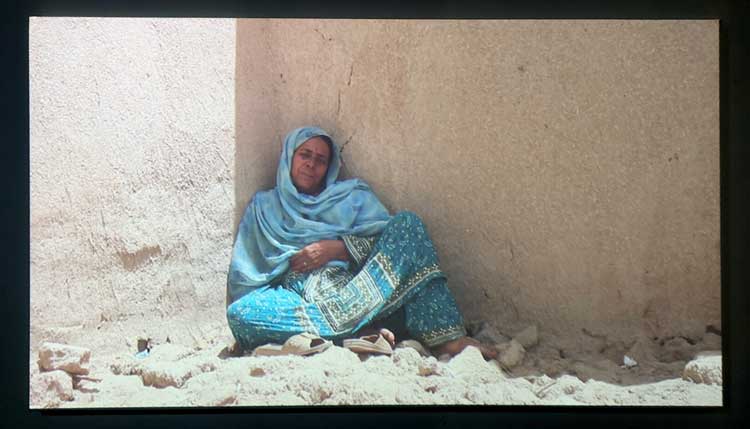
Leeko, a digital video installation portraying a woman in blue traditional Balochi garb seated in a corner against a mud wall in what appears to be barren and rough terrain. As she sits, she hums a melodious, unidentifiable tune—one sung by elderly Baloch women to mark milestones such as weddings and to remember loved ones. Through this work, Amin’s intention is to highlight ‘modern feminist definitions within traditional Baloch values.’3 The video shot in Nushki, Pakistan, is an ode from a mother, Fazila— a long-lost acquaintance of the artist— to her deceased son. Amin relays, “The song is deeply emotional— she expresses how precious he was to her, calling him king and speaking to him as if he’s still with her.”4 These songs speak to the endurance of the Baloch folk, of their strength in the face of hardship, political upheaval, and loss of life, while the film itself places resilient Baloch matriarchs firmly at centre stage.
Rinoshan Susiman has 4 single channel videos of similar durations, titled, When I was 16 I – IV playing simultaneously. The imagery is in grayscale except for a few red silhouettes that appear sporadically in each video; one appears to be a dancing figure, another an animation character from the 1980’s/1990’s. The videos, ominous in their outlook, attempt to represent both emotional and physical landscapes. This is expressed through familiar visuals such as a dance sequence from a local film with the actor enthusiastically dancing inside a tv screen within the screen. Simultaneously a view from what appears to be the bottom of a well keeps reappearing on the other three screens at different times. Another clip depicts a serene landscape with a waterbody at its centre when suddenly the grey of the sky turns a bright cadmium red. Through these works, Susiman seeks to make sense of and bridge the past— as he knew it— with the present: a reality utterly transformed by conflict and genocide, during which he was sheltered in a seminary. In his own words, ‘Returning home after leaving the seminary, I found myself estranged and disconnected from a society that had been reshaped by the violence and trauma of war…This work emerges from the personal disorientation and my ongoing exploration of self and landscape.’5 Through these videos, Susiman reflects on socio-political undercurrents and power structures of a nation in crisis.
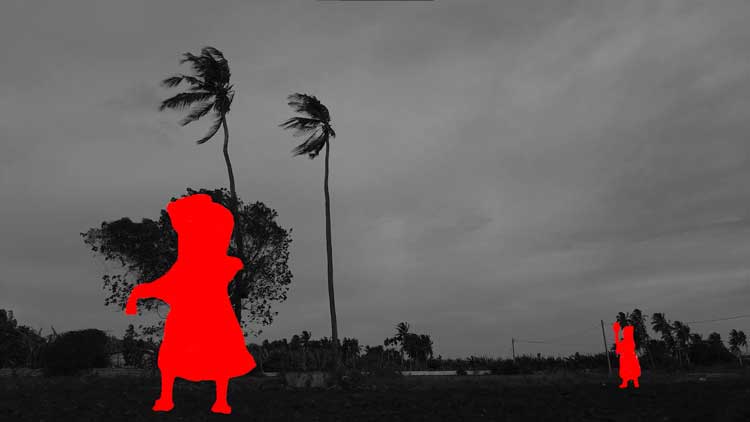

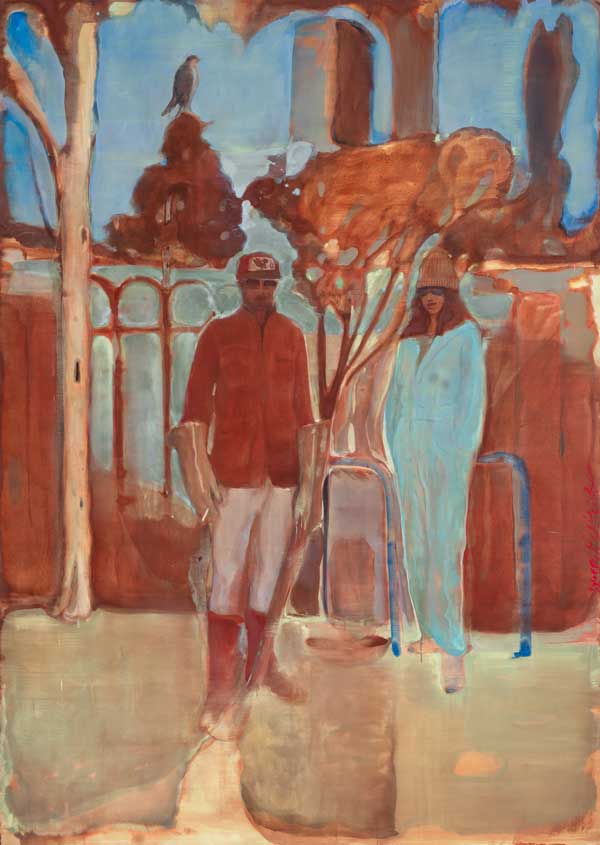
Suleman Khilji presents two paintings in the show: a small-scale work painted on a found leather book sleeve, and a large-scale piece titled Mnemonic Spaces (Hampstead Heath and Lawrence Garden). The latter, resting on two found bricks, is an oil on canvas depicting two central figures and an inordinately large bird perched atop a tree in the background; all rendered in a warm, faded, sepia-tinted hue reminiscent of analogue vintage films of yesteryear. For Khilji, the very attributes of paint/ing, the fluidity and the potential to change and conceal, reflect his conceptual trajectory: a meditation on the ever-evolving nature of collective consciousness. Playing with opacity, translucency and transparency marked with subdued washes, Khilji blurs the lines between fact and fiction, documentation and imagination. His visuals interrogate the contradiction between urban/social growth using contemporary and historic visual ephemera. In his own words, he is ‘exploring the similar differences or different similarities between spaces like Hampstead Heath and Lawrence Garden. The characters from Lahore and London, as seen in the work, don’t actually exist; they are composites, created through multiple layers of remembrance of people I’ve met, read about, or known.’
Prarthna Singh’s book Har Shaam Shaheen Bagh: One hundred days of Resistance is a thick volume composed of portrait photography alongside poems, stories, children’s drawings and conversations. The publication may best be described as a resistance journal documenting real life peaceful protests, headed by Muslim women of Delhi, embodying a celebration of sorts, practicing unity in the face of national distress. The protest that was a response to the Indian Government’s Citizenship Amendment Act, documents the women (and their stories) at Shaheen Bagh, a working-class neighbourhood that was transformed to accommodate a long running protest until the Covid-19 lockdown brought the event to a close.
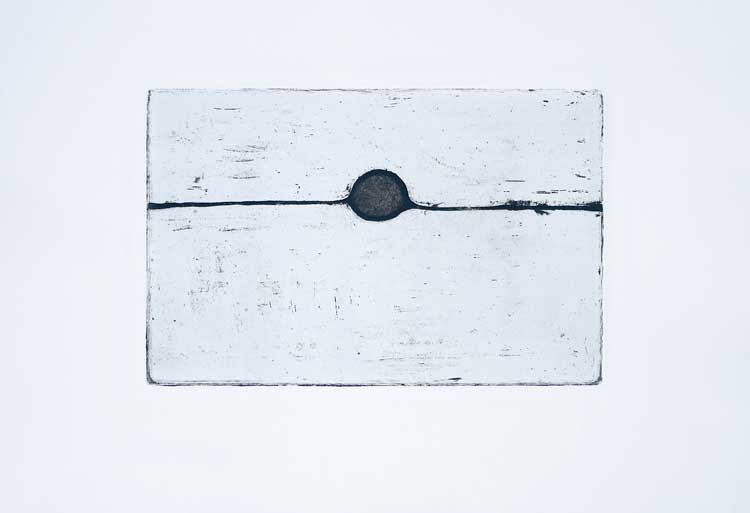
In an exhibition filled with tech-savvy, larger-than-life, and ambitious works, Aban Raza’s small-scale prints might easily be overlooked if not for their minimalist composition, which draws viewers in and compels them to move closer for inspection. Titled Subh-e-Azaadi, based on Faiz Ahmed Faiz’s poem, these etchings confront prevalent sociopolitical climate in India. Besides representing her interest in the greater universe and black holes, Raza’s practice is charged with imperative political context. In her work she raises fundamental questions about the life of ‘the large minorities’ and other ‘working majorities’ and the ‘right to protest and exist.’ As an artist and activist, Raza uses her practice to address and acknowledge multiple human realities, be they oppression within the caste system or the ongoing farmer suicide crisis in India, using her creative output as a tool to fight for a just society.
The showcase, when viewed as a whole, without wall panels identifying the artists’ origin or countries, the borders and geographical terrains dissolve into nothingness. The collective experiences and concerns of the artists in (Un)layering the Future Past of South Asia resonate across regions, reflecting an interconnectedness far louder and brighter than the colours of their passports. Significantly, the foundation of the show lies in appraising South Asia’s creative output through a decolonising lens, while simultaneously deconstructing history to forge a renewed and improved future.
Curated by Salima Hashmi and Manmeet K. Walia, ‘(Un)Layering the Future Past Of South Asia: Young Artist’s Voices’ was up at SOAS Gallery in London from 11th April till 21st June 2025. The exhibition also included artists Sher Ali, Varunika Saraf, T. Vinoja, Hema Shironi, a collaborative piece by Maheen Kazim & Purvai Rai, Dinar Sultana, Pradeep Thalawatta, Ayesha Sultana, Amrit Karki, Moonis Ahmed, Hadi Rahnaward, Ghulam Mohammad, Aisha Abid Hussain, Palash Bhattacharji, Soumya Sankar Bose, Sajid Khan, Ashfika Rehman, and Hanifa Alizada.
Title image: Installation shot, SOAS Gallery, London
References:
Exhibition Booklet. (2025) Unlayering the Future Past of South Asia: Young Artists Voices.
Arte Laguna prize. (2025) https://artelagunaprize.com/prodotto/river-diversion/
D’Souza, Mario. (2023) Curatorial Essay, Shrine Empire Gallery, https://www.shrineempiregallery.com/upload/exhibitions/curatorial_file492276654.pdf
Galerie Eric Mouchet, (2022), https://www.ericmouchet.com/gem/tame–sib–طعم–سیب–kubra–khademi/?lang=en
Galerie Eric Mouchet, (2025, March 13) https://www.dropbox.com/scl/fi/7zy8xvbf4j2okidcj2cji/ARTISTIC-PORTFOLIO_Kubra-Khademi_ENG.pdf?rlkey=u5a7r1x37teh240gkbqy1n6x0&e=1&st=eflebu3o&dl=0
Terrain.Art. 2025, https://www.terrain.art/discover/artists/aban-raza
Drishya. (2025, April 10), A London Exhibit Will See 26 South Asians Spotlight The Complexities Of Their Homelands, Home Grown, https://homegrown.co.in/homegrown-creators/a-london-exhibit-will-see-26-south-asians-spotlight-the-complexities-of-their-homelands
Har Sham Shaheen Bagh (2022, April, 7) https://harshaamshaheenbagh.com
Royal Art Academy, (2024) https://www.royalacademy.org.uk/art-artists/name/suleman-aqeel-khilji
Conversations—Brief interviews with artists’ Aimen Amin, Rinoshan Susiman and Suleman Khilji.
- Exhibition Booklet, 2025
- Patricia Couvet, 2023
- Exhibition booklet, 2025
- Artist interview, 2025
- Artist interview, 2025
Samar F Zia
Samar F. Zia is an artist, curator and writer based in London. Besides being a mother artist and maker, she authors critical essays examining cultural markers such as art and books. Zia holds an MA FA from Central Saint Martins, London and graduated with Distinction in BFA from Indus Valley School of Art and Architecture, Karachi. She regularly contributes to her Alma Mater UAL’s Alumni of Colour Association (AoCA) by curating exhibitions and events. She has been artist-in-residence at the Fitzrovia Community Centre where she curated multiple exhibitions. She is also a Trustee of the Fitzrovia Chapel. Zia is founder of Art Social where she facilitates bespoke creative workshops for youth groups and adults for various institutions across London. Zia regularly exhibits in both Pakistan and the UK. Zia has also participated in art fairs in UK such as the Affordable Art Fair and Fresh Art Fair. Besides being an independent curator and workshop lead, she has worked as Exhibition Guide at the Hayward Gallery. She has served as visiting faculty at Indus Valley School of Art and Architecture, Karachi and taught at Art Academy London.
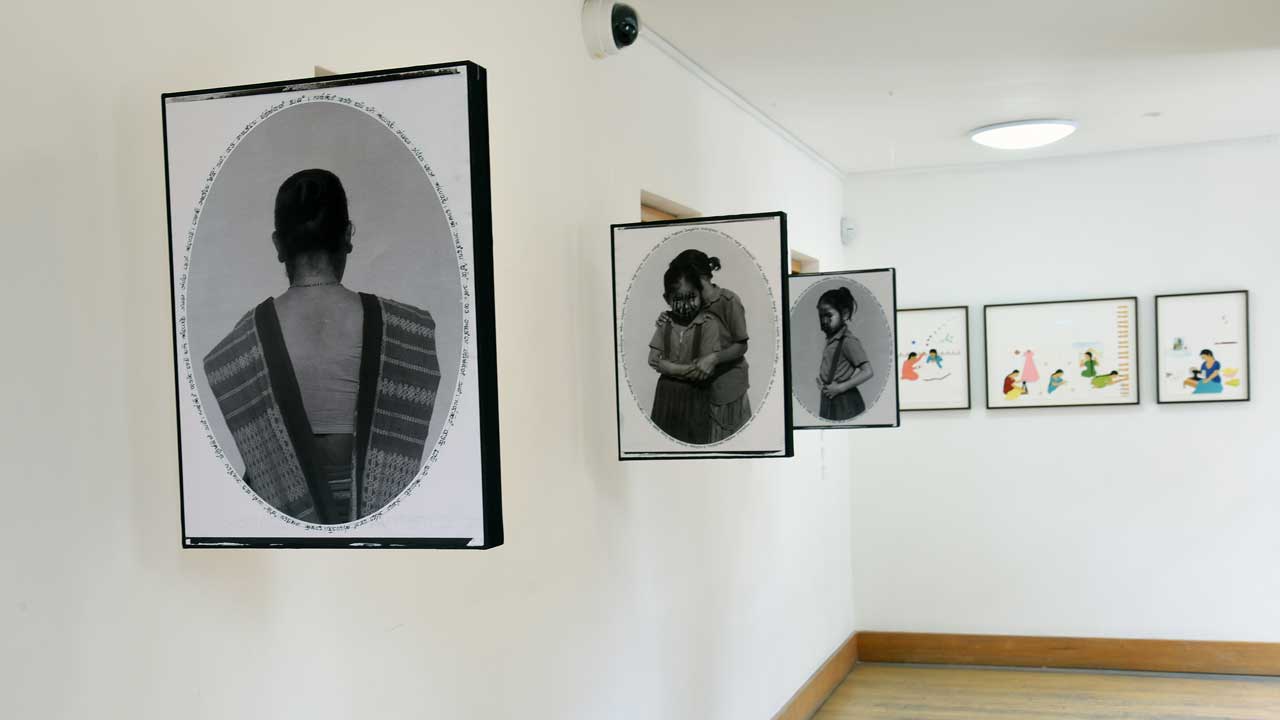


There are no comments